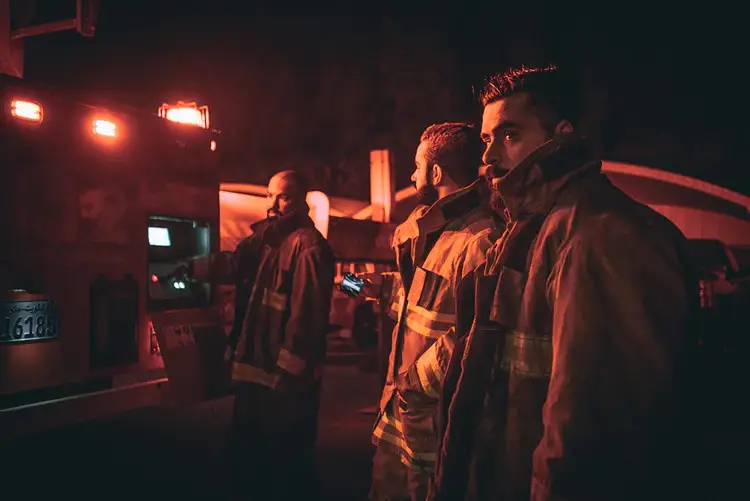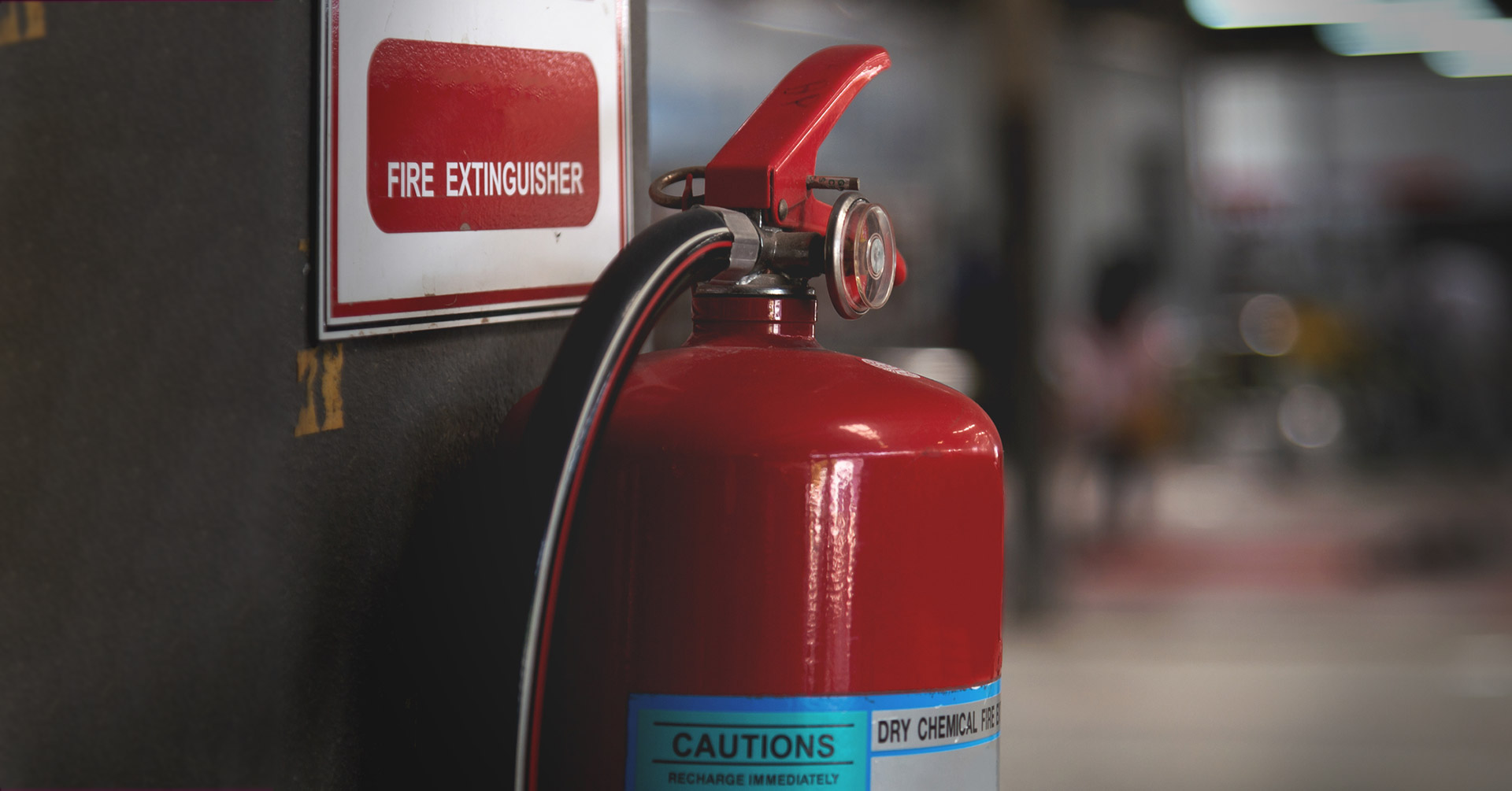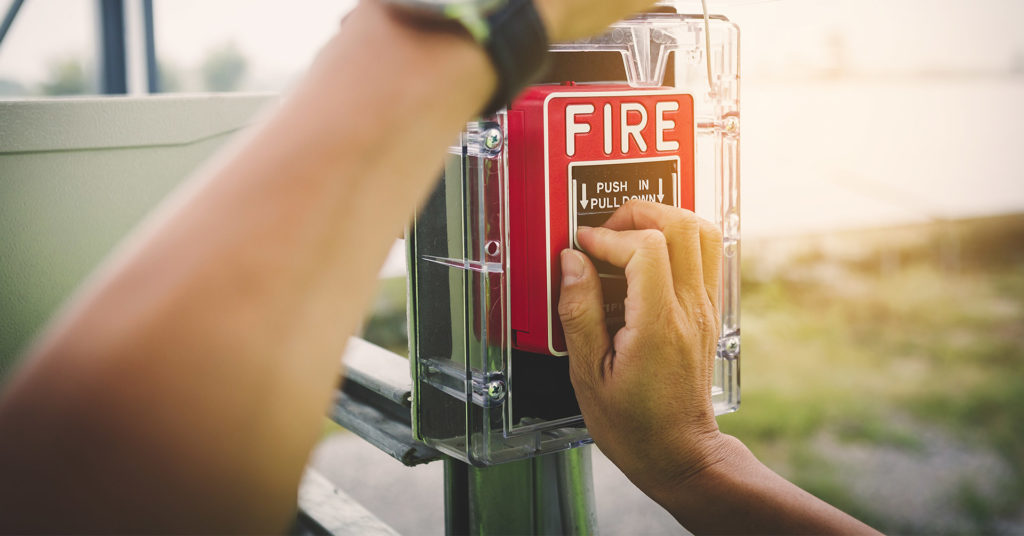
Common Fire Hazards in the Workplace and How to Avoid Them
While workplace fires are sometimes out of an organization’s control, understanding risk will help dramatically reduce the likelihood a fire will occur.
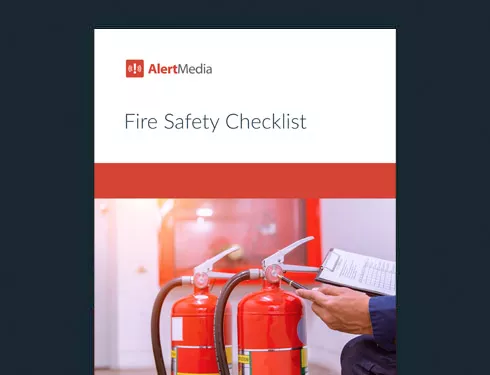
Unfortunately, there’s no such thing as a completely fireproof facility. There are simply too many possible risks to safeguard against every hazard. While workplace fires are sometimes out of an organization’s control, understanding risk will help dramatically reduce the likelihood a fire will occur.
For example, a food processing plant will have specialized equipment (deep fryers and heat exchangers) that put it at greater risk of a fire than a dental clinic located in a high-rise building. That said, high rises carry inherent challenges you won’t find in a one-story facility—such as siloed communication from one floor to the next.
There are some universal threats that apply across organizations, but you must also take into account your industry- and facility-specific considerations for fire safety. This article will go over some of the most common fire hazards in the workplace according to the type of facility, as well as hazards that apply to all businesses.
Workplace Fire Risks by Facility
Every organization is vulnerable to workplace fires. Depending on the nature of your team’s work, specific structures, and industry considerations, assess your potential fire hazards and develop a fire safety plan accordingly.
Manufacturing and industrial facilities
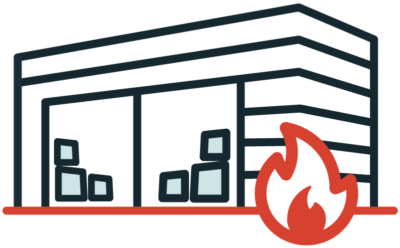
According to the National Fire Protection Association (NFPA), the top causes of manufacturing and industrial fires are:
Electrical equipment: Exposed wiring, overloaded outlets, and static discharge can all increase the risk of fire. Conduct routine inspections, maintenance, and personnel training on all your possible electrical hazards.
Lighting equipment: Improperly installed lighting and poorly placed fixtures pose serious fire hazards. Conduct regular facility walk-throughs to ensure lighting is functional, properly installed, and free from fire hazards.
Combustible material: Many materials—including dust, dyes, chemicals, and metals—have the potential to be combustible. Eliminate ignition sources when working with combustible materials, and keep storage areas cool and dry.
Hot work: Welding, heating, and soldering can produce 1000°F sparks, which can easily travel 35 feet. Ensure that personnel is properly trained, supervision is in place, and all materials are properly stored and handled.
Flammable liquids/gasses: Fires at chemical plants can often be attributed to combustible gasses such as rocket fuel, acrylic acid, and crude oil. If you have these in your workplace, ensure they are properly stored and free from incompatible materials such as oxidizers.
If any part of your business is located in a manufacturing or industrial facility, factor these significant hazards into your fire safety plan.
Office properties
The column structure of a high-rise property poses unique fire hazards for any workplace within. Office properties of any kind require fire prevention measures, including thorough risk assessments.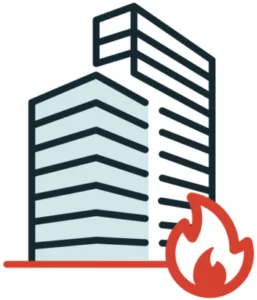
Electrical issues: Exposed or faulty wiring and overloaded outlets can lead to electrical fires. Conduct routine inspections to ensure power strips aren’t overloaded, and prohibit or closely monitor personal space heaters. Regular electrical wiring inspections are also highly recommended.
Kitchen appliances: According to the U.S. Fire Administration (part of FEMA), over 30% of all workplace fires in 2019 began in an office kitchen. Ensure that fire extinguishers are located near kitchens and appliances are fully functional.
Loose papers: Fire needs fuel. Loose papers act as tinder and can exacerbate an already-dangerous fire. Conduct routine walk-throughs to remove or contain combustible materials.
Smoking: An improperly extinguished cigarette butt can ignite a fire, especially in drought conditions. Ensure properly installed ashtrays in designated smoking areas to reduce fire hazards.
Whether your office is located 20 stories high or in a single-level facility, a workplace fire can be dangerous, costly, and difficult to recover from. Identify and minimize workplace fire hazards to safeguard your business and protect your people.
Construction sites
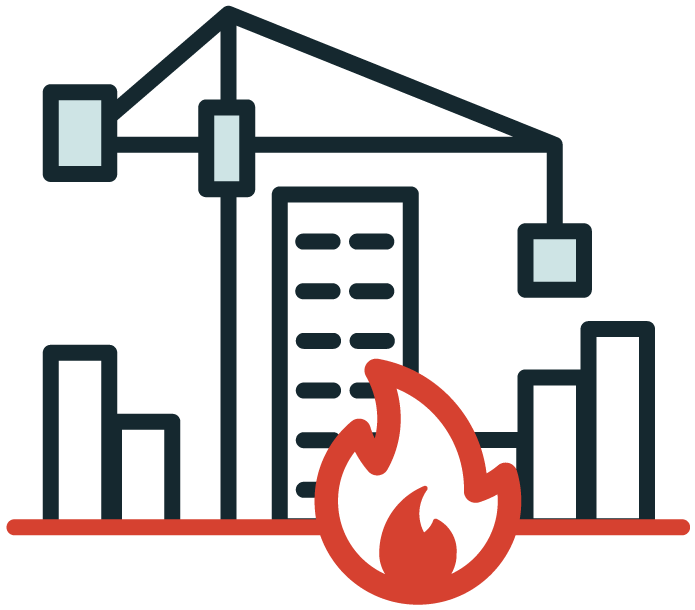
Whether it’s new construction or an existing building under renovation, construction sites are some of the most vulnerable structures when it comes to fire hazards. The NFPA lists the following risks specific to the construction industry:
Unprotected site: Because safety installations are late-phase projects, construction areas are often without fire protection systems—such as sprinklers, smoke detectors, and fire alarms—for extended periods of time. If you are the fire chief on-site, you should have a pre-fire plan ready and train all personnel.
Equipment: Where there’s welding, cutting, and soldering, there is the potential for sparks that could lead to a fire if proper safety procedures are not in place. Establish extra precautions during all fire-prone activities.
Vandalism: Construction sites often have limited security measures in place, which makes them susceptible to trespassing, vandalism, and intentionally set fires (arson). Protective measures such as signage, fencing, and temporary security cameras can help deter criminal activity.
Regardless of your industry or the specific layout of your facility, conduct a thorough, regular risk assessment to protect employees and safeguard your business from fire hazards.
Fire Risks Every Business Should Consider
There are common fire hazards in the workplace that apply across industries and organizational structures. A company’s employee count, employee concentration within a structure, level of safety training, how the workforce is dispersed, and employee turnover rate are all factors to take into consideration during a fire risk assessment.
Once workplace fire risks have been identified, it’s time to implement a fire safety plan based on your findings. The process of building out an effective plan can feel overwhelming. Make use of a comprehensive fire safety checklist to help frame your overall approach.
The following list is designed to help your organization prepare for action before a workplace fire and following an incident. While these items do capture the main areas of concern, businesses will have unique needs to take into consideration.
Pre-Fire Checklist
Equipment and tools
Assessing the condition of your organization’s safety equipment is an essential first step in fireproofing your workplace. Leadership should assign a fire safety team to conduct routine inspections of your entire facility’s safety equipment and tools. Ensure that:
- Fire safety equipment is inspected and up-to-date (fire extinguishers, smoke alarms, sprinkler heads, etc.)
- Ignition sources, such as ovens, are well-maintained, and their surroundings are clear of any flammable objects
- Flammable materials are cleared out when possible—including dust, which can build up in vents and pose a fire hazard
- Company data is backed up both on-premises, off-premises, and in the cloud
- You’ve invested in a reliable mass communication system to message your people before, during, and after a fire emergency
Facility
Your organization’s fire safety team should conduct a thorough walk-through of your entire facility in an effort to assess its fire readiness. While every facility will have unique considerations (as mentioned in the risk portion of this article), the team should ensure that:
- Fire exits are clearly marked, illuminated, and accessible
- A safe meeting place has been established for staff
- Walkways are clear (per building code requirements)
- The evacuation plan has been posted in a location visible to all employees
Personnel & training

A company’s greatest asset in fire preparedness is its people. Unfortunately, an unprepared team will panic if a fire breaks out. This can lead to slowed evacuation, misinformation, and lost lives. The fire safety team should focus efforts on staff training to minimize human errors and ensure a swift, safe emergency response.
- Fire safety team roles and responsibilities have been assigned
- Staff is properly trained on all components of the evacuation plan
- Staff is properly trained on the use of all fire safety equipment, locations of extinguishers, and fire exit routes
- Staff is aware of workplace do’s and don’ts during a fire
Planning
It’s human nature to panic at the first hint of smoke. After all, there are few scenarios more frightening than a fire in the workplace. This is why thoughtful, well-informed planning is truly a life-saving measure. Your organization’s fire safety team should ensure:
- A thorough fire safety evacuation plan is in place
- Leadership is clear on how to conduct a fire drill—including logistics and frequency, evacuation routes, roles, and the use of a safe meeting location
- Leadership has conducted a thorough audit of the facility for fire risks: exposed wiring, faulty electrical equipment, loose papers, properly stored and labeled flammables/hazardous materials, and cluttered areas, to name several
- A protocol is in place for post-fire messaging, status checks, and alternate working locations
Post-Fire Checklist
Communication
The window of time immediately following a fire is critical. Even the most orderly evacuation can leave individuals stranded inside the facility or at a location separate from the safe meeting place. Consider investing in a reliable emergency notification system to reach employees wherever they are and send out status checks to ensure those who need help get it quickly. A communications leader should ensure:
- Safety wellness checks are sent out to all employees immediately following a fire incident
- News of the fire is communicated externally to customers, partners, investors, and the community
- A fire debrief takes place to assess the cause of the fire, the company-wide emergency response, and what could have been done differently for a safe evacuation
- Instructions are circulated regarding office closure/reopening and alternate working sites
- Employees are educated on the cause of the fire and how to avoid fire risks in the future
- Resources for impacted employees (including psychological and financial) are shared
Assessment
Once the smoke has cleared and your organization begins the recovery process, you’ll want to take inventory of the damage for insurance purposes and to evaluate measures to prevent future workplace fires. Your fire safety team should:
- Conduct a walk-through (once safe) to assess fire/water damage to the structure, equipment, devices, and additional assets
- Take photos and video to document observations for potential insurance claims
Learning
While some fires are simply unavoidable, there are always lessons to be learned in the aftermath of any emergency. Your fire safety team should:
- Make plans to better fireproof the workspace
- Modify fire drill procedures based on post-fire findings
- Communicate findings to every employee
If any of these items are left unchecked, you could be putting lives in danger. Revisit any areas that feel weak or could use more attention. “Better safe than sorry” is never more applicable than when your employees and business are at risk.


